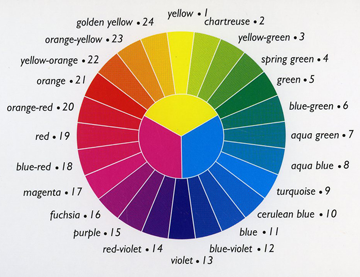Color Coordinating Your Horse
How do you choose the right color for your horse?
I'll tell you. I am an artist who specializes in painting horses and pets. I do own horses and have ridden for most of my life. I never was interested in showing so I've never paid much attention to specifically choosing a color in regards to showing but I think I can share enough here to help you out. Two things I love- horses and color! So here goes!
Determine your horse's coat color. If you need help this pdf is helpful.
5 Basic Horse Coat Colors
- Black
- Bay
- Brown
- Chestnut
- White
Neutral Colors:
In home decorating and fashion, gray, black white or any earth tone is considered neutral. Since horses basically come in earth tones we will talk specifically about neutrals as it applies to horse coat and choosing tack or rider colors.
Horse coats that are considered neutral would be gray, white, and black. A neutral color technically goes with anything. It would be wise to shy away from whites and blacks in your clothing though since it's unlikely your horse will be an exact shade of white or black.
Gray, White, Black Coat Colors:
Yes: bright colors pop with horses in this color category. Bold, rich colors will sing. Jewel colors such as emerald, amethyst, and ruby are some examples. The chart below has some examples. No: dusty, muted or pastel colors may look dull.
Chestnut, Sorrel (the red heads!!) Use complimentary colors to red or orange. Complimentary colors are the colors on the opposite side of the color wheel. Colors in the blue and green family will go well. Softer pastels may work also. The 'red' in chestnut horses can vary from a fiery or copper penny red to a golden warm brown. Use the chart below to get you started and consider your own horse's shade of red.
Yes: cool blues, greens, purples- dark or pastel shades both work, ex. lavender, periwinkle, mossy green. The more red in your horse's coat the more you go toward the green side of the color wheel. The more orange in the coat veer toward the blues. For golden reddish brown coats rich purples and blues. Earthtones and with bright accent can look good on a chestnut.
No: No reds, oranges or yellows as the main color. Use warm colors only if it is paired with the complementary color. Ex. purple with gold accent, Hunter green with pink accent. Turquoise with magenta.

Bay: Bays also vary in shade. Determine if your horse veers more toward a cool bay (no red or warm highlights) to a blood bay with a deep mahogany highlight. The brighter (warmer, redder) bays will look good with the colors opposite red and orange. Blues, greens work. If the coat color is darker a dark blue, purple or green will get lost so choose a warmer, brighter color such as burgundy or even lighter colors such as shades of pink or magenta. Lavenders, mint greens, periwinkle even warm beige or tan can look good on a dark bay.
Yes: Lighter greens, blues, purples, earth tones and pinks on a non-reddish bay. Red based bays will look good in darker blues, greens, turquoise, jewel tones with the exception of ruby.
No: Do not pair a dark bay with dark cool colors. They will get lost on him. Do not pair a 'blood' bay or warm, redder by with anything in the red/orange family.
Browns: In my opinion, horses are rarely 'brown'. They are more likely to be bay or chestnut. But if you have a brown horse with no real red highlights he would be considered a 'cool' color because it lacks reds. So you can pair a brown like that with warm colors like russet, golds, burgundy, pinks. Pastel shades can compliment this coat color too. I would consider a true brown horse (one without red in his coat) to be a neutral color. Most any color- other than brown on brown, could potentially work.
I have included a hair color chart to help you determine whether your horse's coat is 'warm' or 'cool'. Basically, any hair color that has gold, orange or red highlights is warm. On a hair color chart, cool colors are described as ash. So if your horse's coat color most closely matches #8 on the above chart- Light Ash Brown, it is a cool color and can be paired with warm complementary colors.
So to wrap up- determine your horse coat color. Determine whether it is a cool shade or a warm shade. Determine whether your horse is a light or dark shade. From there become familiar with the color wheel. Your best bet is to find color combinations that are complementary to your horse's coat color, or on the opposite side of the color wheel. Some basic rules would be to avoid using light colors on a light horse. Avoid dark, subdued colors on a dark horse. Avoid reds on a red. You can also create some optical illusions by using darker/ solid colors to 'hide' flaws. If your leg position isn't the best, create a long, lean, "quiet" leg by darker. solid colors that will blend with your saddle. For a mousey horse that lacks some pizazz, bright bold patterns and colors can draw attention to you.
Remember too that color conveys emotion. In addition to making your horse, tack and outfit visually appealing, you may want to consider what emotion it may evoke. Below is a chart that shows what emotions go with which color.
Hope this helps... and above all- enjoy your horse and have fun!
Happy Trails!
Sue Steiner
equine artist at Free Rein Art Studio
Source for Coat Color Info:
http://florida4h.org/projects/animal_sciences/HS_pdfs/HSM10/HSM10_ch2.pdf
Find me on: Facebook https://www.facebook.com/FreeReinArtStudio/ Etsy https://www.etsy.com/shop/FreeReinArtStudio Pinterest https://www.pinterest.com/sue_steiner/ Instagram https://www.instagram.com/freereinart/ Twitter https://twitter.com/saveaface Website: https://www.horseartonline.com





Comments